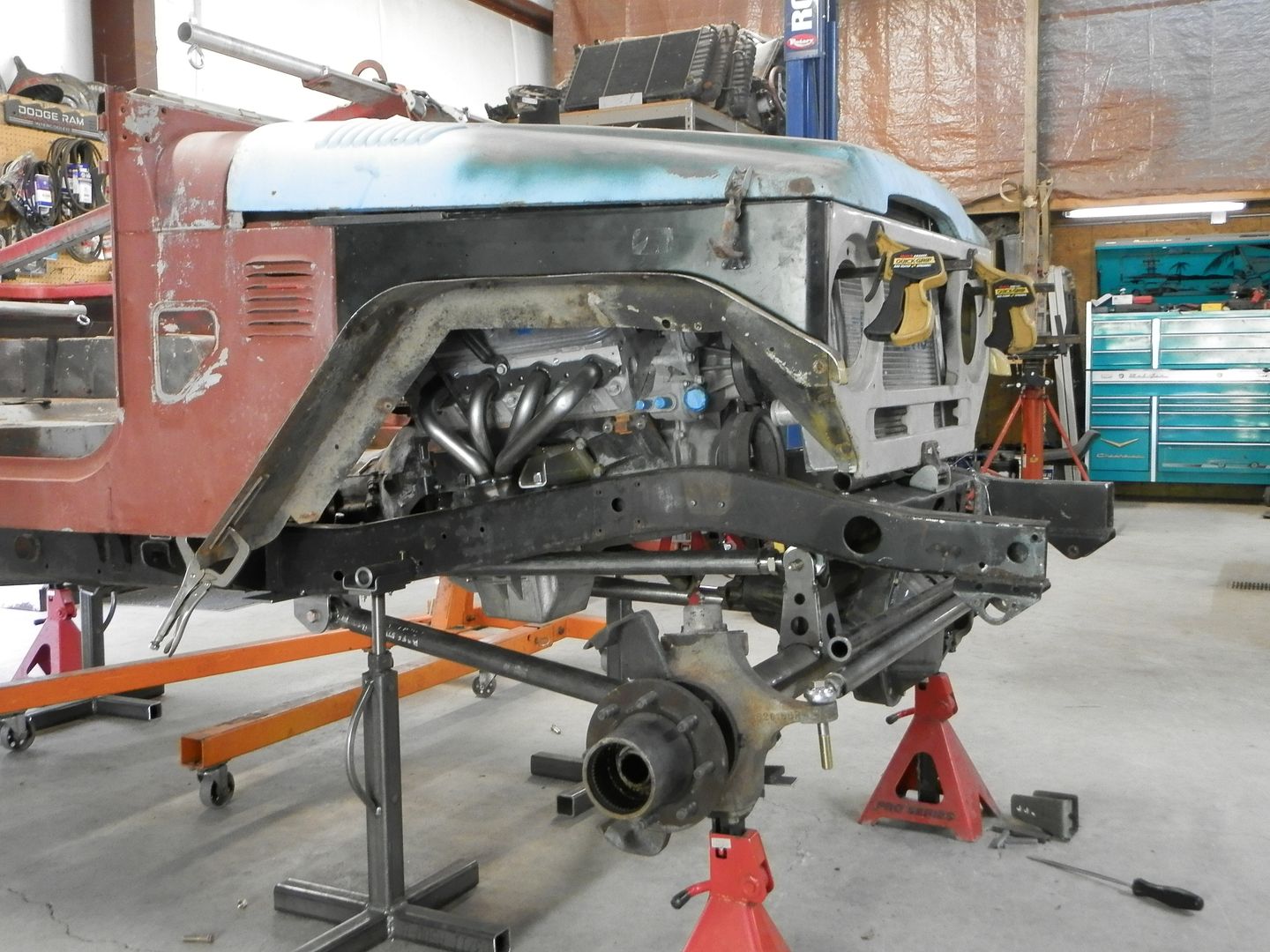Do any of you guys watch cooking shows? Well there's one guy that I really admire in the food world, Gordon Ramsay. His NO-BS attitude automatically let's you know where you stand. He will tell you like it is, or tell you to get out. In a past life I worked as a chef so I have experience with guys like him. If I still were a chef, I would love to work for him. The reason I chose Hell's Kitchen for this build is twofold; One - I was brought a mystery basket of parts and told to use them. Two - it's a budget build so asking for permission to spend more than I need to would get me the Gordon Ramsay response.
Here goes.
We started with a trailer load of parts:
- FJ40 tub and frame of unknown vintage
- LS V8 of unknown variety
- Dana axles, previously modified
The criteria behind this build was:
- 4 seat trail-only rig
- Link suspension
- 40" tires or thereabouts
- It had to appear to be a FJ40 when completed
- Budget of "under 50K"
The customer and I decided on a TH400 for the trans, a 3.8 Atlas t-case, a 4 link rear kit and 3 link front kit from RuffStuff (to keep costs down). I procured some parts and the building began. We have no visions of KOH victory, no aspirations to climb Mt Everest, but it should be a capable rig. So if you see something here in the pages that follow that raises a question, there's probably a reason behind it.
Here's the body and frame we started with.

After mounting the motor, trans and t-case, and plating the frame, I quickly got to work designing the rear suspension. I set it up with a bit less roll steer than a KOH car and there is a bit of adjustability built in. The wheelbase was stretched to 115" wheelbase.



Here goes.
We started with a trailer load of parts:
- FJ40 tub and frame of unknown vintage
- LS V8 of unknown variety
- Dana axles, previously modified
The criteria behind this build was:
- 4 seat trail-only rig
- Link suspension
- 40" tires or thereabouts
- It had to appear to be a FJ40 when completed
- Budget of "under 50K"
The customer and I decided on a TH400 for the trans, a 3.8 Atlas t-case, a 4 link rear kit and 3 link front kit from RuffStuff (to keep costs down). I procured some parts and the building began. We have no visions of KOH victory, no aspirations to climb Mt Everest, but it should be a capable rig. So if you see something here in the pages that follow that raises a question, there's probably a reason behind it.
Here's the body and frame we started with.

After mounting the motor, trans and t-case, and plating the frame, I quickly got to work designing the rear suspension. I set it up with a bit less roll steer than a KOH car and there is a bit of adjustability built in. The wheelbase was stretched to 115" wheelbase.





























